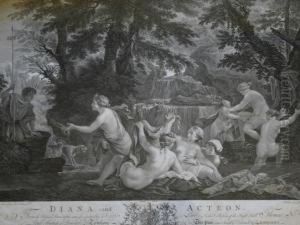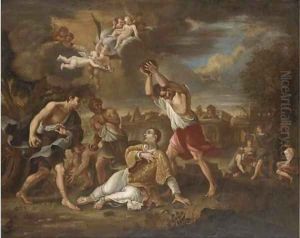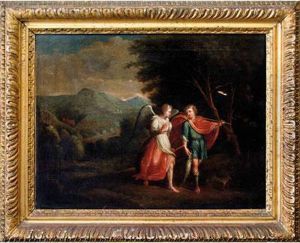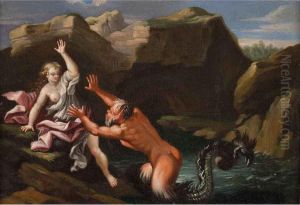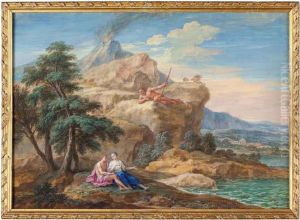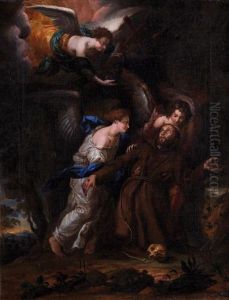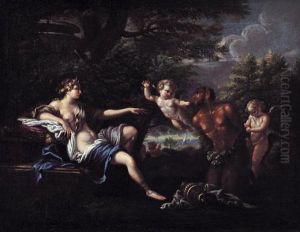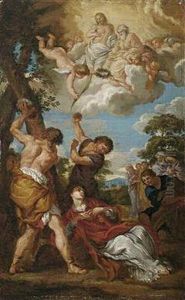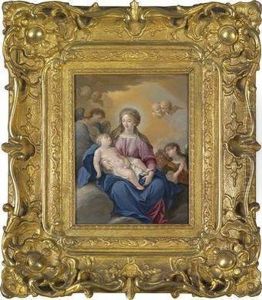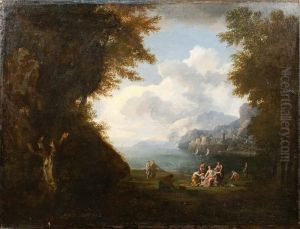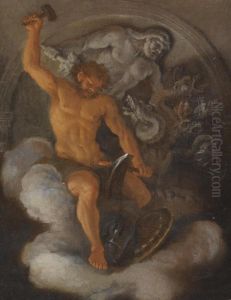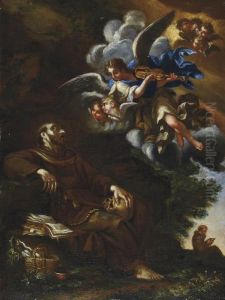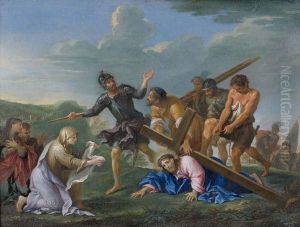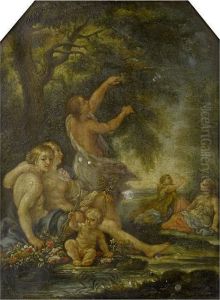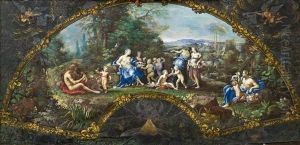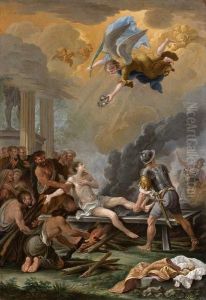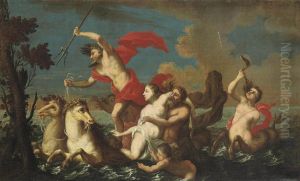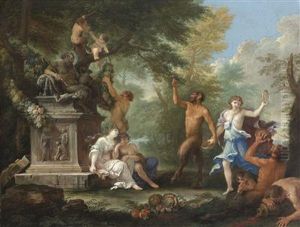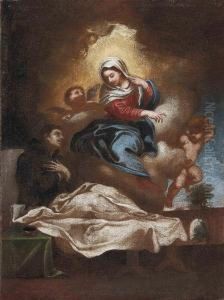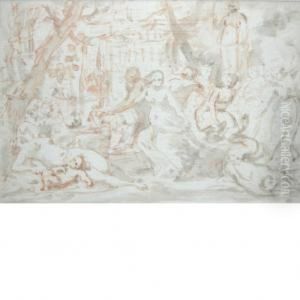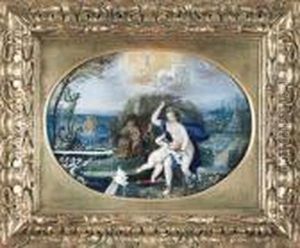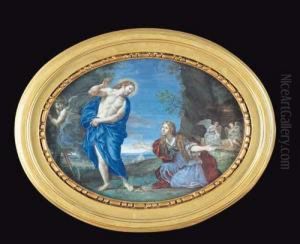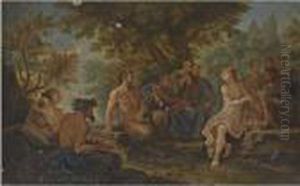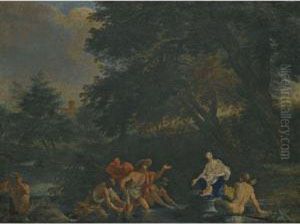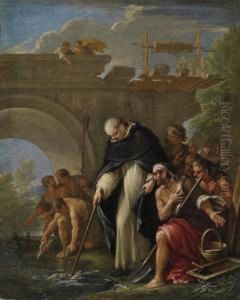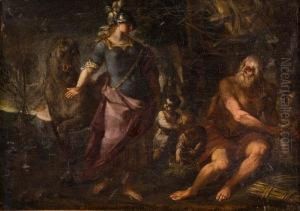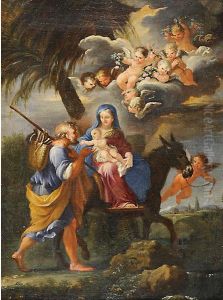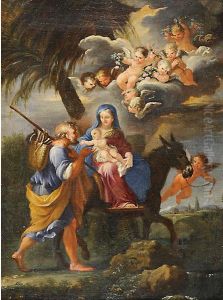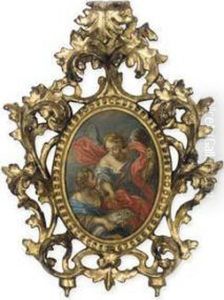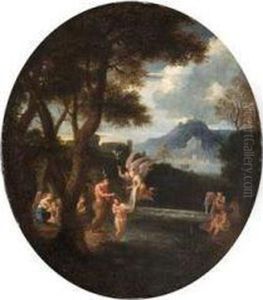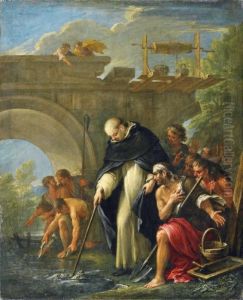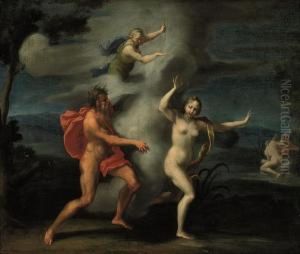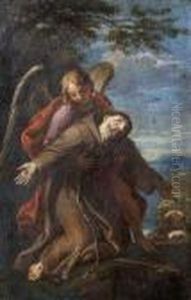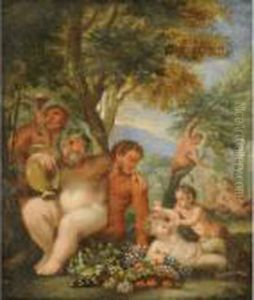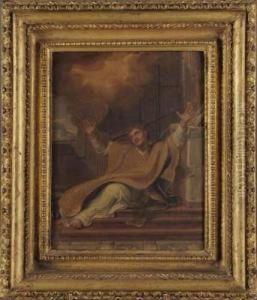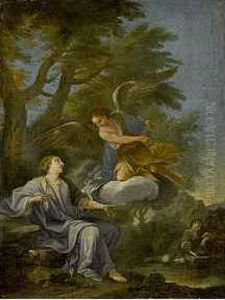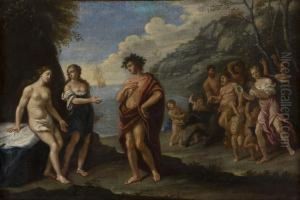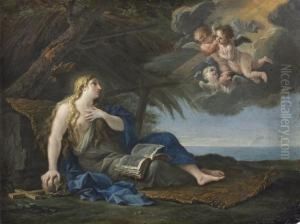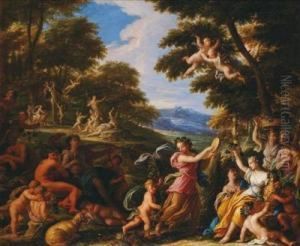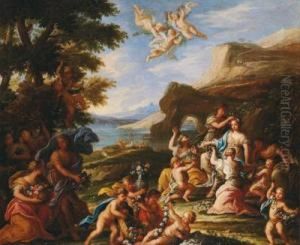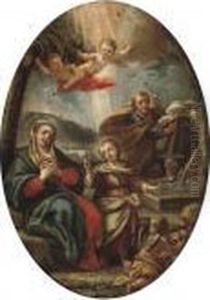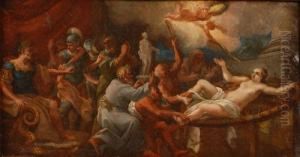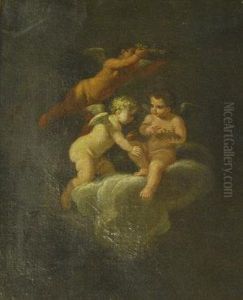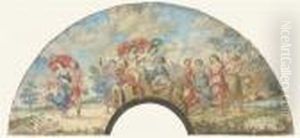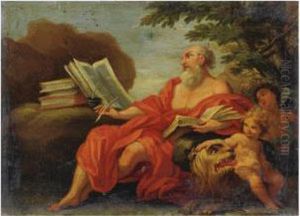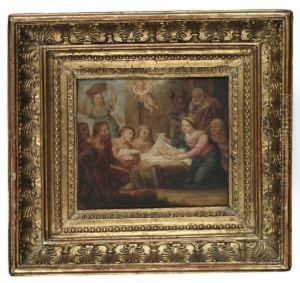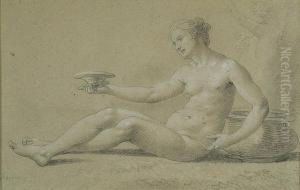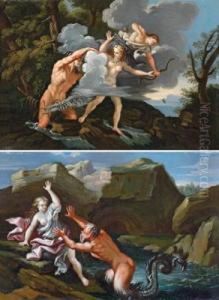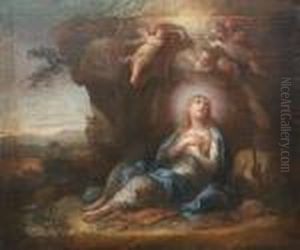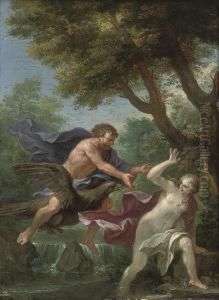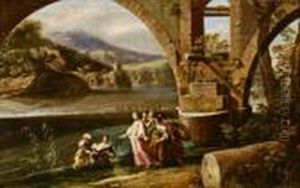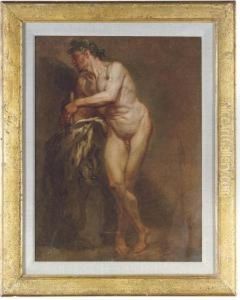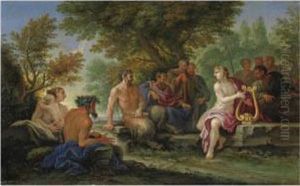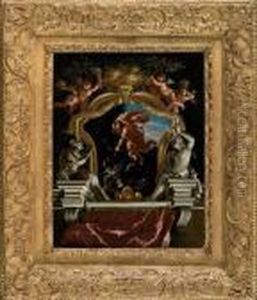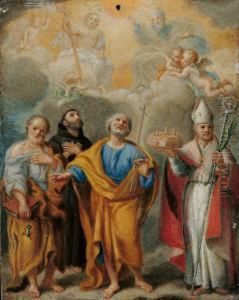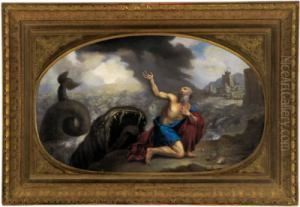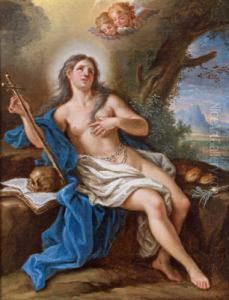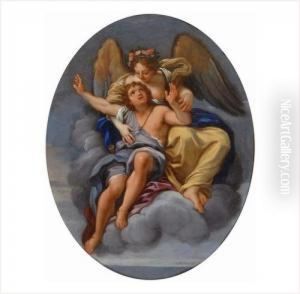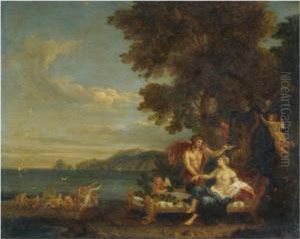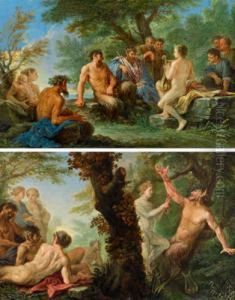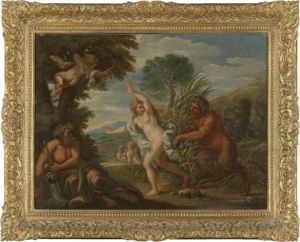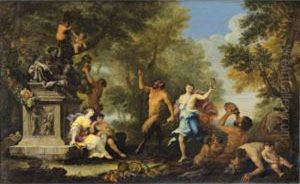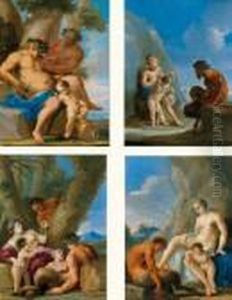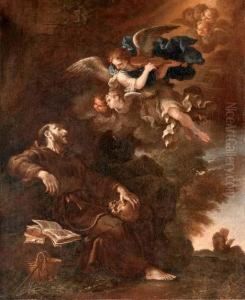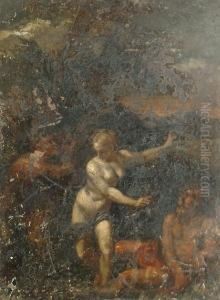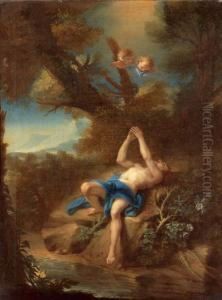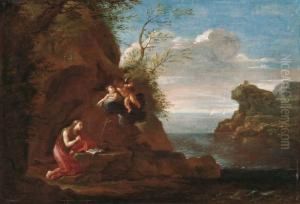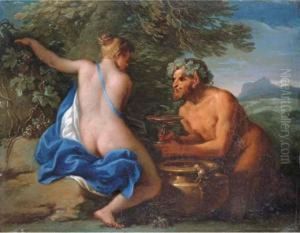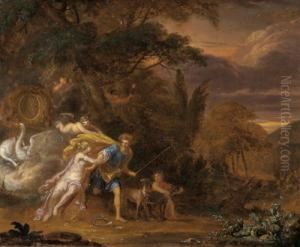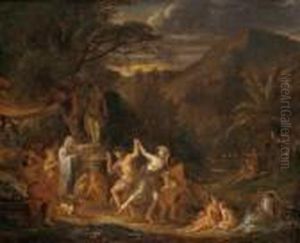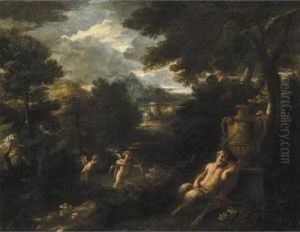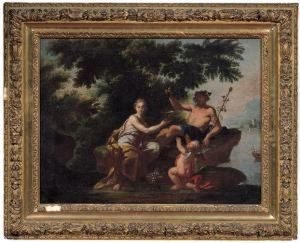Cirlce Of Filippo Lauri Paintings
The phrase 'Circle of Filippo Lauri' refers to a group of artists who were active during the same period as Filippo Lauri and whose work is stylistically similar to his. Filippo Lauri himself was an Italian Baroque painter born on November 25, 1623, in Rome. He is known for his small-scale landscape and genre paintings, which often featured mythological and bucolic scenes. Lauri was part of a family of artists; his father was Balthasar Lauwers, a Flemish painter who had settled in Italy, and his brother Francesco Lauri was also a painter.
Filippo Lauri became a pupil of his father and Angelo Caroselli. He was particularly influenced by the work of Claude Lorrain, a leading landscape painter of the time, and by the French artist's emphasis on the pastoral. Lauri's paintings are characterized by their delicate figures, skillful use of light, and a warm palette that contributed to the idyllic and often romantic atmosphere of his scenes.
He became a member of the Accademia di San Luca in Rome in 1639 and served as its principe (president) in 1673. Lauri's work was highly appreciated during his lifetime, and he gained a reputation as one of the leading painters of his generation in Rome. He collaborated with other artists as well, including his brother Francesco and the landscape painter Giovanni Francesco Grimaldi. When figures were needed in a landscape painting by another artist, Lauri was often called upon to add them, thus creating works that were a product of such artistic partnerships.
The term 'Circle of Filippo Lauri' can sometimes also apply to artists who were directly influenced by Lauri or who may have collaborated with him. This circle would include artists who continued his style or who produced works that were reminiscent of Lauri's themes and aesthetic. Identifying specific artists within this circle can be challenging, as the distinction between the master's hand and that of his followers or contemporaries can often be subtle. Artworks from the circle are sometimes attributed to 'Follower of Filippo Lauri' when the authorship cannot be firmly established.
Filippo Lauri's career spanned a significant part of the 17th century, and he continued to paint until his death on December 12, 1694. His legacy lived on in the works of the artists from his circle, as well as in the continued popularity of the Baroque style in European art.
